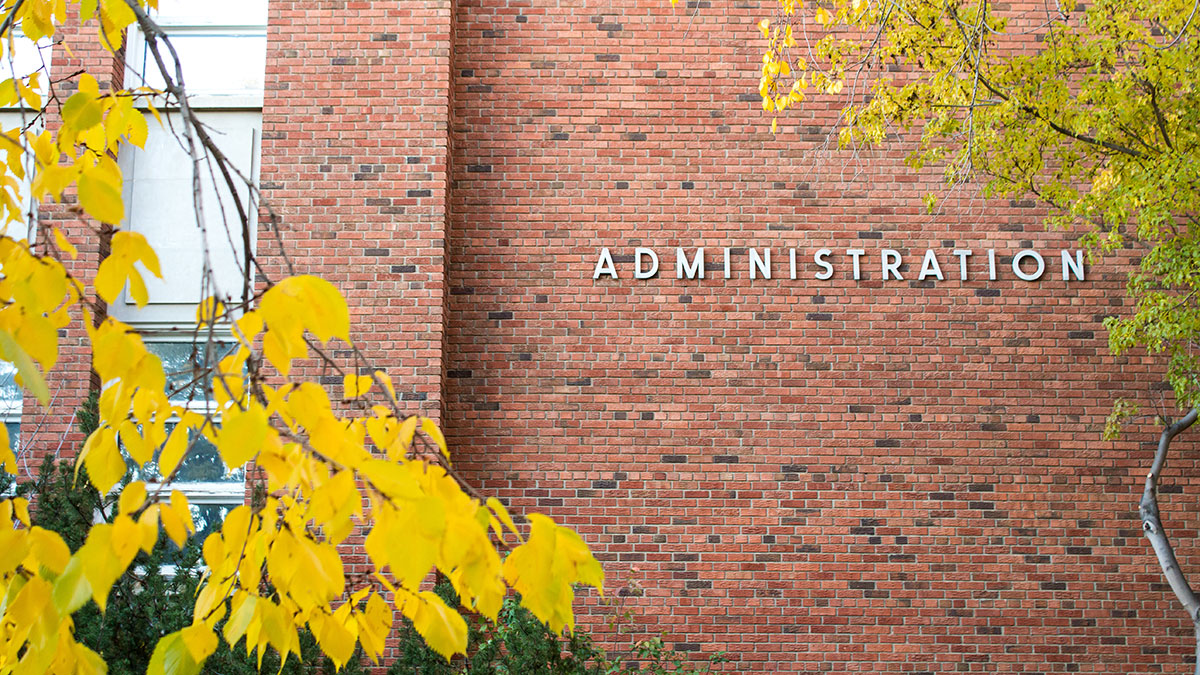 Christina Varvis
Christina VarvisIn a Sept. 1 Globe and Mail op-ed defending the University of British Columbia administration’s silence toward the firing of their president, former University of Alberta president Indira Samarasekera wrote that students “care nothing about presidents.”
Of course, school work is most students’ first priority. But after four years, it’s difficult to not pose at least some questions about how the U of A operates. If students had clear answers to such questions, they’d be following the hiring of a new university president as they’d follow a federal election.
Since major journalism outlets seem to be satisfied with sound bytes from the U of A front office, The Gateway is by default the primary media source covering administration. Yes, the college newspaper that publishes two joke issues every year, 3 Lines Free and the Purity Test.
This isn’t to say The Gateway lacks a professional standard — a number of national awards prove we’re one of the best student newspapers in Canada. But The Gateway lacks the resources to cover administration in a substantial capacity (about three or four reporters for approximately 2,500 administrators). Thus the relationship between institution and media coverage is severely disproportionate. And while the News section offers sober, neutral reporting, all other sections of The Gateway are prone to continue a tradition of extravagant absurdity.
These, and other reasons regarding experience level, cause the student journalists who are supposed to report on administration to not be taken seriously. Under Samarasekera’s leadership, The Gateway staff had difficulty interviewing administration, especially about pertinent issues that affected the entire university community, such as the 2013 post-secondary funding cuts.
“(Samarasekera) was very secretive,” says Michelle Mark, The Gateway’s 2013/2014 News Editor and a graduate of Columbia Journalism School. “It really seemed (Samarasekera) would only step in and agree to an interview for damage control or if a story had just gotten out of hand.”
Administration’s prerogative to reticence allowed, for example, the Office of the Registrar in 2013, with little forewarning and no official media statement, to delay the dates on which students would receive scholarships.
“It was really confusing,” says Mark, describing the 2013 incident. “(The registrar) told no students and there were no updates on its websites. Everyone freaked out.”
The Student’s Union was partially responsible for the miscommunication, but Mark adds the registrar’s failing to adequately prepare for the media is characteristic of administration’s broader attitude. Interviews properly explaining the scholarship situation were granted to The Gateway after CBC and the Edmonton Journal ran the story.
Obscurity operates both for and aganst administration, as students are unsure about who to blame when trouble arises. The Student’s Union receives unwarranted vicious attacks, but so does the president. The Gateway’s Opinion section burnt Samarasekera as an effigy for 10 years largely out of ignorance, and the fact that she is a woman of Sri Lankan descent with an uncommon name who earned as much money as she did was no little contribution to her notoriety, whether or not she deserved her reputation. In February 2014, a popular satirical sign erected in front of the Fine Arts Building claimed a monolithic “Arch of Samarasekera” was to be erected on top of the building and St. Stephen’s College. Students apparently care enough about presidents to mock them. The problem is that students aren’t receiving the appropriate information to care any more.
Administration is partly responsible. Transparency remains a problem, as does accessibility — frequently, student journalists endure the rigamarole of navigating a robust bureaucracy only to be directed to the wrong administrator. What often happens is that either the administrator is of too high a level, already extremely busy and possesses only a superficial understanding of a certain topic, or the administrator is low-level and, as Mark characterizes, “the least important person in the office.” Mark says that the few times in which administrators demand an interview from The Gateway are when other administrators err.
However, the major responsibility in making students care about administration and presidents and the budget is The Gateway’s. We must prove to administration that interviews with us on topics more substantial than rudimentary job descriptions are worth their time, and that our questions are intended to understand perspectives rather than to simply lambast. Lampooning administration, if the situation calls for it, should be done with a comprehensive understanding of the circumstances. It must be noted that the new, awkward statue of Alexander Rutherford and Henry Marshall Tory was fully funded by the Alumni Association and corporate partnerships, not administration.
Given the public’s financial, cultural and epistemological stake in the university, administration should be covered in as much detail as is city council or the provincial government. As it stands, administration’s dealing with the media suffers from unpreparedness and opacity. The Gateway must ask questions that elicit more nuanced responses.
Samarasekera’s replacement David Turpin has spent the last few months fostering a positive image of himself. If a 2013 Martlet article, in which he is paraphrased as saying “A president’s role is successful if students have the freedom not to concern themselves with administrative issues” is to be any indication about he’ll administer, The Gateway’s task is clear — we must convince students otherwise.





Strikes me as awfully ignorant to throw ten years of writers under the bus in an effort to make yourself look like the conscientious one.